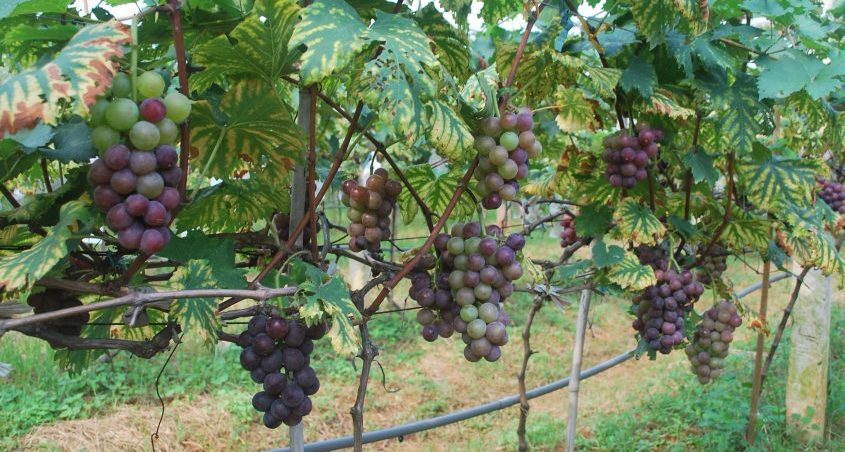Cinnamon from Vietnam Exploring the Fragrant Treasures
Prepare to immerse yourself in the enchanting realm of Cinnamon from Vietnam, where fragrant treasures await your discovery. In our blog post, we delve deep into the origins and allure of this aromatic spice from Vietnam. Uncover the secrets behind its intoxicating aroma, explore its distinct flavor profiles, and learn how it has shaped the culinary traditions of the region.
1. Introduction to Vietnam’s Cinnamon A Fragrant Treasure
Now let’s dive into the history and unique qualities of Vietnamese cinnamon.
1.1. The History of Cinnamon Cultivation and Trade in Vietnam
Cinnamon has a long and illustrious history in Vietnam, where it has been cultivated and traded for centuries. Let’s delve into the captivating story of cinnamon in Vietnam and trace its journey through time.
- Ancient Roots: Cinnamon cultivation in Vietnam can be traced back to ancient times. The warm and humid climate of the region provided ideal conditions for the growth of cinnamon trees, making it a natural choice for cultivation.
- Cultural Significance: Cinnamon holds a special place in Vietnamese culture and traditions. It was not only valued for its culinary uses but also revered for its medicinal properties. Vietnamese herbalists and healers often incorporated cinnamon into their remedies and traditional medicines.
- Tracing the Spice Routes: Vietnam’s strategic location along historical spice routes facilitated the trade of cinnamon. As merchants traversed the seas, Vietnamese cinnamon found its way to various parts of the world, becoming highly sought after for its quality and unique flavor.
- Colonial Influence: During the colonial period, Vietnam’s cinnamon trade flourished under the influence of European powers. The French, in particular, recognized the value of Vietnamese cinnamon and played a significant role in its cultivation and export.
1.2. Understanding the Unique Qualities of Cinnamon from Vietnam
Cinnamon from Vietnam stands out among its counterparts for its distinctive qualities that set it apart in the world of spices. Let’s explore the unique characteristics that make Vietnamese cinnamon truly exceptional.
- Captivating Aroma: Vietnamese cinnamon, also known as Saigon cinnamon, entices the senses with its captivating aroma. The sweet, spicy fragrance fills the air, leaving an intoxicating trail that instantly ignites culinary inspiration. It has the difference between Vietnamese cinnamon and ceylon.
- Robust and Spicy Flavor: Vietnamese cinnamon boasts a bold and robust flavor profile. Its spicy notes are more pronounced compared to other varieties, adding a delightful kick to dishes. The distinct heat and depth of flavor make it a cherished spice in both sweet and savory recipes.
- Reddish-Brown Hue: One of the visual hallmarks of Vietnamese cinnamon is its beautiful reddish-brown color. The vibrant hue adds visual appeal to culinary creations and hints at the richness of flavor that awaits.
- High Essential Oil Content: Vietnamese cinnamon contains a high concentration of essential oils. These oils contribute to its intense flavor and aromatic qualities, elevating the taste experience to new heights.
- Exceptional Quality: The quality of Vietnamese cinnamon is renowned worldwide. It is meticulously cultivated and harvested, ensuring that only the finest cinnamon sticks make it to the market. This dedication to quality results in a spice that consistently delivers an unparalleled taste experience.
2. How to source the best cinnamon from Vietnam
When it comes to procuring the finest cinnamon from Vietnam, it’s crucial to adopt a strategic approach to ensure top quality and reliable supply. Here are key steps to source the best cinnamon from Vietnam, ensuring a successful and satisfying procurement experience:
- Establish Trusted Partnerships: Begin by identifying reputable suppliers and establishing strong partnerships. Conduct thorough research, verify credentials, and assess their reputation in the industry.
- Direct Communication: Foster direct communication channels with potential suppliers. Engage in detailed discussions about their sourcing methods, cultivation practices, and quality control processes. Seek transparency regarding the origin, processing, and certification of the cinnamon from Vietnam.
- Quality Assurance: Emphasize the importance of stringent quality control measures. Request documentation and certificates that demonstrate adherence to international quality standards. Evaluate the supplier’s quality control procedures, including testing methods for flavor, aroma, color, and other parameters specific to cinnamon from Vietnam. A commitment to quality ensures the delivery of premium products.
3. What are the popular types of cinnamon from Vietnam
When it comes to cinnamon from Vietnam, popular types are available in various forms, including cinnamon sticks, split cinnamon, and ground cinnamon. Let’s explore each type:
- Split Cinnamon: Split cinnamon from Vietnam refers to cinnamon sticks that have been carefully split or rolled, allowing for easier handling and infusion of flavors. These split cinnamon sticks are often used in traditional Vietnamese cuisine to impart a distinctive aroma and flavor to soups, broths, and slow-cooked dishes. Split cinnamon can be added directly to the dish and removed before serving or used in spice blends and sachets for convenient flavoring.
- Ground Cinnamon: Ground cinnamon is made by finely grinding the cinnamon bark. In Vietnam, ground cinnamon is widely used in baking, desserts, spice blends, and beverages. It provides a convenient option for quickly incorporating the warm, sweet-spicy flavor of cinnamon into various recipes. Ground cinnamon is versatile and adds a delightful touch to dishes like cinnamon rolls, cakes, cookies, oatmeal, and hot beverages like coffee, tea, or hot chocolate.
Cinnamon Sticks: Cinnamon sticks from Vietnam are long, cylindrical pieces of cinnamon bark that can be used for infusing flavors in cooking and beverages. Vietnamese cinnamon sticks are highly popular and are often referred to as “quills.” They are prized for their aromatic fragrance and the ability to slowly release flavors when added to recipes like curries, stews, mulled drinks, and desserts. By follow this link, you can see more about the potential Vietnamese cinnamon sticks CS1: https://hncinnamon.com/k-agriculture-vietnamese-cinnamon-sticks/




